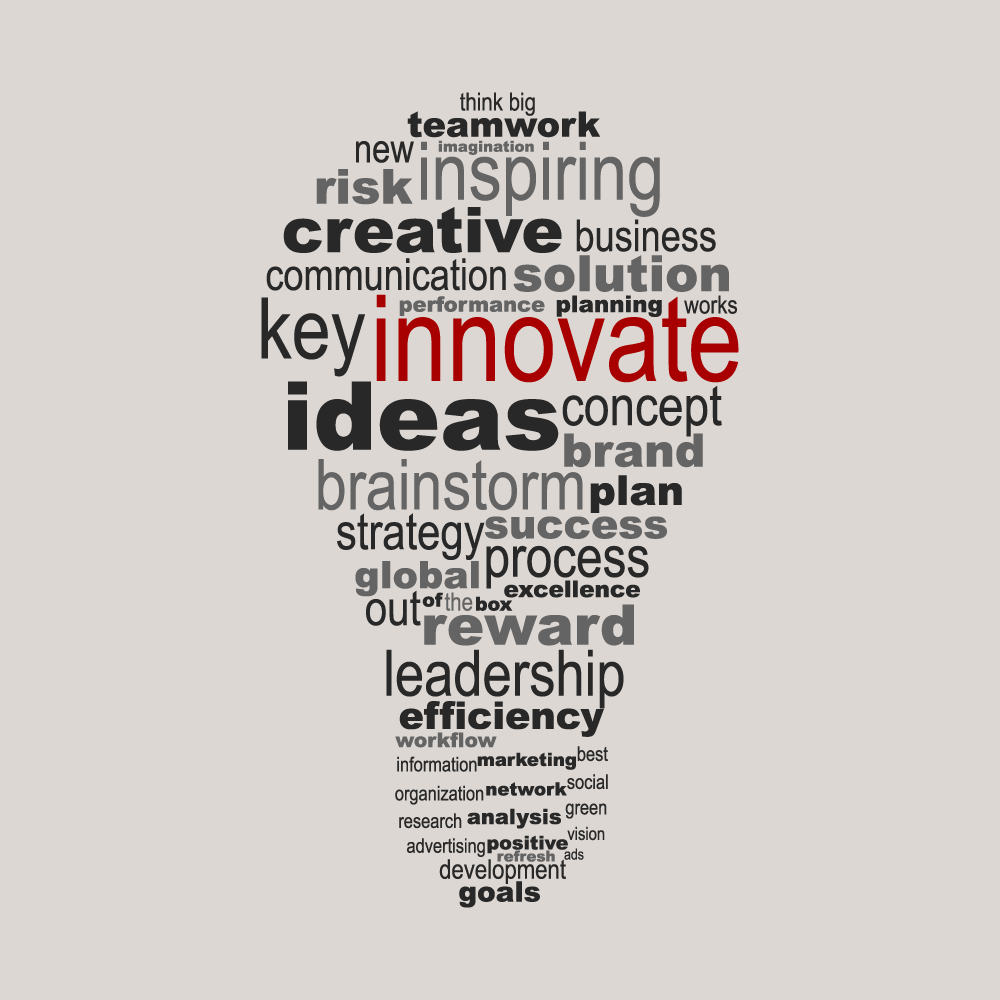The significance of innovation extends well beyond the walls of the company. It impacts employees, customers, stakeholders, suppliers, and even broader communities. By understanding the importance of innovation, developing strategic approaches to harness it, and fostering an environment that encourages new ideas, businesses can position themselves to excel in uncertain times.
In the following sections, we will explore why innovation matters, the common hurdles companies face in their pursuit of fresh ideas, and actionable strategies for embedding innovative thinking into the core of your organization.
Before diving into the complexities of implementing innovative strategies, it is essential to recognize what innovation truly represents. Far too often, people limit their definition to breakthrough inventions or ground-breaking technologies. While these certainly embody innovation, the concept is broader and encompasses subtle improvements, incremental enhancements, and creative problem-solving approaches.
A. Innovation as a Mindset
Innovation is a lens through which opportunities are seen. Instead of accepting the status quo, innovators continually question, explore, and test new ideas. They view challenges as gateways to possibilities rather than obstacles. This mindset embraces experimentation and recognizes that failure is part of the learning process. By adopting an innovative outlook, businesses become more agile and open to transformation.
B. Continuous, Incremental Improvements
Not every innovation has to revolutionize an industry. Incremental changes—such as refining customer service protocols, improving supply chain efficiencies, or updating marketing strategies—can collectively have a substantial impact. Over time, these smaller enhancements accumulate, strengthening the company’s competitive position and paving the way for larger breakthroughs down the line.
C. Systemic and Strategic Approach
Innovation is not a random spark of genius; it can be systematic and deliberate. By setting innovation goals, tracking progress, and allocating resources to research and development, companies ensure that creativity is not left to chance. A strategic approach to innovation involves aligning efforts with business objectives, ensuring that new ideas support the company’s vision, mission, and long-term targets.
Why Innovation Matters in Today’s Business Landscape
The importance of innovation in business cannot be overstated. As technology and global markets evolve, the ability to adapt and innovate becomes a prerequisite for sustained success. Companies that rely solely on traditional models risk losing relevance in an environment where competition is fierce and customer expectations are in a constant state of flux.
A. Staying Ahead of Competitors
In today’s highly competitive landscape, being first to market with an innovative product or service can secure a significant advantage. When you differentiate through innovation, competitors are forced into a reactive position, scrambling to catch up. By consistently updating offerings, improving user experiences, and adopting new tools, you set yourself apart as a market leader.
B. Meeting and Exceeding Customer Expectations
Customers now have a wealth of information at their fingertips and are increasingly selective about where they invest their time and money. They expect products and services that are not only high-quality but also tailored to their individual preferences. Innovation enables businesses to anticipate and respond to these evolving needs, personalizing experiences and ensuring customer satisfaction in the long run.
C. Unlocking New Markets and Opportunities
By experimenting with new concepts, brands can uncover untapped market segments, develop novel solutions, and create value in unexpected ways. This exploration may lead to the discovery of new revenue streams, partnerships, or even entirely new business models. Innovation helps businesses remain flexible and responsive, allowing them to capitalize on emerging trends before the competition.
D. Enhancing Operational Efficiency
Innovation is not confined to product development. It can be applied internally to streamline operations, reduce costs, and improve efficiency. Automating routine tasks, leveraging analytics for better decision-making, and reorganizing workflows all serve to enhance productivity. Over time, these internal innovations boost profitability and help build a stable foundation for growth.
E. Building a Resilient Organizational Culture
Organizations that prioritize innovation cultivate a culture of curiosity, learning, and adaptability. This culture encourages employees to think creatively, share ideas openly, and embrace change rather than fear it. Such an environment attracts and retains top talent, as professionals are increasingly drawn to workplaces that nurture personal growth and inspire fresh thinking.
Common Barriers to Innovation
While most leaders acknowledge the importance of innovation, putting it into practice often proves challenging. Understanding the obstacles that hinder innovation can help businesses craft strategies to overcome them.
A. Resistance to Change
People, by nature, often prefer stability and familiarity. This tendency can manifest as resistance to new processes, technologies, or organizational structures. Overcoming this inertia requires clear communication, strong leadership, and the demonstration of tangible benefits that innovation brings.
B. Fear of Failure
In an environment that values flawless execution, the prospect of failure can stifle creativity. Employees may hesitate to propose new ideas if they fear negative consequences for experimentation. Encouraging a culture where failures are viewed as learning opportunities helps break down this barrier.
C. Resource Constraints
Innovation requires time, talent, and financial investment. Limited budgets, tight deadlines, or lean staffing can hinder experimentation. Leaders must find a balance between maintaining day-to-day operations and dedicating sufficient resources to research, development, and creative thinking.
D. Lack of Clear Strategy
Without a well-defined innovation strategy, even the most enthusiastic team members can flounder. Confusion about priorities, goals, and success metrics can lead to wasted effort and frustration. Developing a structured plan ensures that innovative initiatives have the guidance and support they need to deliver tangible results.
E. Siloed Thinking
When departments operate in isolation, information sharing and collaboration suffer. Siloed thinking restricts the cross-pollination of ideas that often sparks breakthrough solutions. Encouraging interdepartmental communication, forming cross-functional teams, and utilizing collaborative tools can break down these barriers.
Fostering an Innovative Organizational Culture
A thriving culture of innovation does not happen by accident. It emerges from deliberate efforts to encourage creativity, support risk-taking, and empower employees to think beyond their usual boundaries.
A. Encouraging Open Communication
Transparent dialogue and free-flowing information are crucial ingredients for innovation. When employees feel comfortable voicing their ideas, concerns, and insights, leadership gains access to a broader range of perspectives. This inclusivity ensures that the best ideas rise to the surface, regardless of their source.
B. Celebrating Diversity of Thought
Teams composed of individuals from different backgrounds, experiences, and skill sets are more likely to generate unique ideas. By embracing diversity and inclusion, organizations create an environment where innovation flourishes organically. Different viewpoints challenge assumptions, reveal blind spots, and broaden creative possibilities.
C. Rewarding Initiative and Creative Thinking
Recognizing and rewarding employees who contribute fresh ideas sends a powerful message. Whether it is through formal rewards like bonuses and promotions, or simpler gestures such as public acknowledgments, positive reinforcement encourages others to engage in innovative thinking. Over time, a cycle of innovation and recognition takes root, elevating the entire organization.
D. Providing Continuous Learning Opportunities
Training, workshops, and professional development programs sharpen employees’ skills and expand their horizons. A workforce that actively updates its knowledge base is better equipped to spot opportunities for improvement. Encouraging ongoing learning ensures that talent remains agile and informed about the latest tools, trends, and techniques.
E. Allocating Time for Exploration
Busy schedules and packed calendars can leave little room for the kind of free thinking that drives innovation. Setting aside dedicated time for research, experimentation, and brainstorming signals that innovation is a priority. This structured approach helps employees move beyond routine tasks and consider how to solve problems more creatively.

Strategic Innovation Planning and Goal-Setting
Innovation, while creative at heart, also benefits from structure and direction. Establishing an innovation roadmap ensures that efforts contribute to the company’s broader objectives and that resources are used wisely.
A. Defining an Innovation Vision and Mission
Just as organizations define their vision and mission at a high level, they can do the same for innovation. A clear innovation vision clarifies the role of creativity and new ideas in driving business success. It lays out a future state where the company consistently leads through inventive solutions.
B. Setting Measurable Objectives and Key Results
Without measurable targets, it is hard to gauge the impact of innovative efforts. By establishing clear objectives—such as reducing production time by a certain percentage or increasing customer satisfaction ratings—companies can track progress. Monitoring key results ensures that innovation projects stay aligned with strategic goals.
C. Conducting Market and Trend Analysis
Effective innovation requires understanding the external environment. Regularly tracking market trends, competitor strategies, and emerging customer preferences keeps the organization informed. Armed with this knowledge, businesses can identify where to focus their innovation efforts and how to time their initiatives for maximum impact.
D. Scenario Planning and Risk Management
Innovation, by nature, involves uncertainty. Scenario planning helps businesses anticipate potential outcomes and prepare contingency plans. By understanding the risks and developing mitigation strategies, leaders can confidently pursue new ideas, knowing they have plans in place should complications arise.
Harnessing Emerging Technologies for Innovation
Technological advancements have democratized innovation. Tools that were once available only to large corporations are now accessible to businesses of all sizes, enabling them to experiment, scale, and refine their offerings.
A. Leveraging Data and Analytics
Data-driven insights offer a powerful competitive advantage. By collecting, analyzing, and interpreting data, companies gain a nuanced understanding of their performance. This information can guide product development, highlight customer preferences, and reveal operational inefficiencies. Armed with analytics, leaders make informed decisions that drive impactful innovation.
B. Integrating Automation and AI
Automating routine tasks frees employees to focus on more strategic, creative work. Artificial intelligence (AI) and machine learning algorithms can streamline processes, improve decision-making, and personalize customer interactions. As these technologies continue to evolve, they open doors to transformative possibilities that once seemed out of reach.
C. Embracing Cloud Computing and Collaboration Tools
Cloud-based platforms and collaborative tools enable teams to work together seamlessly, regardless of location. This connectivity breaks down geographical barriers, allowing companies to tap into talent pools around the world. Greater collaboration often leads to faster innovation cycles and more dynamic idea generation.
D. Exploring Emerging Markets and Technologies
Innovations often stem from exploring unfamiliar territory. Businesses can experiment with technologies such as blockchain, augmented reality, or biotech solutions that may reshape their industries. Early exploration and strategic investment in emerging fields can position a company as a trailblazer, securing long-term advantages.
Empowering Leadership and Decision-Making
Leadership plays a pivotal role in fostering innovation. Leaders must set the tone, provide resources, and model the behaviors they want to see replicated throughout the organization.
A. Leading by Example
When leaders embrace innovation, employees take notice. Executives who remain curious, stay informed about industry trends, and actively support innovation projects send a powerful message. This sets a standard that encourages the entire organization to pursue new ideas boldly.
B. Involving Teams in Strategic Decisions
Empowering employees to participate in strategic discussions ensures that the decision-making process benefits from a wealth of insights. When teams are included, they feel valued and take greater ownership of innovation initiatives. This inclusivity increases the odds of successful outcomes and strengthens the company’s collective intelligence.
C. Fostering Emotional Intelligence in Leadership
Emotionally intelligent leaders understand the dynamics of change, can empathize with employee concerns, and navigate resistance with tact. By acknowledging the emotional impacts of new projects or technologies, leaders build trust. An environment built on trust further encourages employees to voice their ideas without fear of reprisal.
D. Staying Adaptable and Flexible
Innovation rarely follows a linear path. Leaders must remain open to adjusting strategies when new information arises or when certain approaches fail. Flexibility ensures that resources and attention can be redirected swiftly, minimizing waste and seizing unexpected opportunities.
Building Strong Customer Connections
Customers are at the heart of innovation. By understanding their needs, preferences, and pain points, businesses can create offerings that resonate deeply and inspire loyalty.
A. Conducting Customer Research and Feedback Loops
Regularly surveying customers, analyzing feedback, and monitoring online reviews reveal trends and areas ripe for improvement. This ongoing dialogue provides valuable clues about what customers truly want, informing innovation efforts to deliver products and services that align with their evolving expectations.
B. Personalizing the Customer Experience
Today’s consumers seek meaningful interactions, not just transactions. By leveraging data and advanced analytics, companies can personalize recommendations, product suggestions, and communication strategies. This attention to individual preferences boosts satisfaction and cements the brand’s reputation as customer-centric.
C. Co-Creation with Customers
Involving customers directly in the innovation process can yield powerful insights. Whether through focus groups, beta testing, or user-generated content campaigns, customers can provide fresh perspectives that shape the final product. Collaborative innovation bridges the gap between the company’s vision and the audience’s reality.
D. Sustaining Long-Term Customer Relationships
Innovation should not focus solely on attracting new customers; retaining existing ones is just as critical. By continuously enhancing offerings, streamlining customer service, and anticipating user needs, companies cultivate long-term loyalty. Satisfied customers become brand advocates, promoting the company and amplifying its innovations to new audiences.
Financial Management to Support Innovation
Effective financial strategies are essential for sustaining innovation initiatives. Companies must strike a balance between day-to-day operations and the resources required for research, development, and experimentation.
A. Allocating Budgets for R&D
Dedicate funds specifically to research and development. While this may temporarily strain resources, the long-term benefits outweigh the costs. Financial investments in exploratory projects, prototypes, and market testing can lead to breakthroughs that propel the company forward.
B. Evaluating Return on Innovation
Innovation does not always yield immediate profits. Leaders should develop metrics to gauge the effectiveness of innovation efforts over time. Tracking variables like time-to-market, customer satisfaction, or operational cost reductions can help determine whether investments are delivering the desired return.
C. Diversifying Revenue Streams
Innovation can create new avenues for revenue. Instead of relying solely on existing products or services, businesses can introduce complementary offerings or enter new markets. This diversification mitigates risk and stabilizes income, providing a cushion that supports further innovation.
D. Risk Management and Contingency Planning
Not every innovative initiative will pay off. Financial safety nets, such as emergency funds or insurance policies, provide a buffer if certain projects fall short of expectations. Having contingency plans in place ensures that a single setback does not undermine the organization’s stability or appetite for future innovation.
Collaborations, Partnerships, and Ecosystems
Innovation does not have to be pursued in isolation. Collaborating with partners, suppliers, and even competitors can accelerate the flow of ideas and produce more impactful results.
A. Selecting Strategic Partners
When choosing partners for innovation projects, look for alignment in values, goals, and capabilities. Companies that share your vision of creativity and progress can amplify each other’s strengths. Joint ventures, research collaborations, or licensing agreements can open new doors and expand your innovation capacity.
B. Establishing Clear Partnership Terms
Defining roles, responsibilities, and expectations upfront prevents misunderstandings later on. Formal agreements outline the scope of collaboration, intellectual property rights, and success metrics. These clear terms set the stage for productive partnerships that enhance both sides’ innovative potential.
C. Encouraging Open Dialogue and Alignment
Regular check-ins, joint strategy sessions, and collaborative platforms facilitate communication between partners. Transparent information sharing ensures that everyone remains updated on project progress and can quickly address challenges. This alignment helps avoid bottlenecks and maximizes the partnership’s value.
D. Leveraging Network Effects
Collaborations often yield more than the sum of their parts. By tapping into each other’s networks—customers, suppliers, and industry experts—companies expand their reach and gain fresh insights. These network effects can spark unexpected innovations and accelerate the process of bringing ideas to market.
Global Perspectives and Multinational Innovation
Innovation knows no borders. In a globalized economy, pursuing opportunities in international markets can expose businesses to novel customer demands, diverse talent pools, and unique cultural viewpoints.
A. Conducting Market Research in Target Regions
Before entering a new market, businesses should thoroughly understand local consumer behavior, regulatory requirements, and cultural nuances. Tailoring products and marketing messages to align with regional preferences increases the chances of successful market entry.
B. Adapting Offerings for Local Needs
Innovation in international markets often involves customization. Whether it is adjusting product features, translating services into local languages, or altering distribution channels, small modifications can make the difference between acceptance and rejection by the local audience.
C. Complying with International Regulations
Expanding globally introduces a maze of legal and compliance challenges. Ensuring that products meet local safety standards, labor laws, and data protection regulations is crucial. Compliance not only prevents legal issues but also demonstrates a commitment to responsible and ethical business practices.
D. Leveraging Local Talent and Expertise
Hiring local professionals or partnering with regional experts provides invaluable insights into the cultural, economic, and political factors influencing customer behavior. This local knowledge shapes innovation strategies that resonate more deeply, resulting in a strong market presence and a reputation for understanding regional needs.
Measuring, Evaluating, and Refining Innovation Efforts
Innovation is an iterative process. After implementing new ideas, companies must assess outcomes, learn from experiences, and refine strategies. Continuous evaluation ensures that innovation remains relevant and impactful.
A. Tracking Key Performance Indicators (KPIs)
Identify KPIs that align with innovation goals. This could include the number of new products launched, time-to-market reduction, percentage of revenue from newly introduced offerings, or improvements in customer satisfaction. Regularly analyzing these indicators highlights areas of success and aspects that need improvement.
B. Gathering Stakeholder Feedback
Employees, customers, partners, and investors all have perspectives on the company’s innovation journey. Seeking their input through surveys, interviews, or panel discussions reveals whether innovation efforts meet stakeholder expectations. This broader feedback ensures that refinements address both internal and external viewpoints.
C. Conducting Internal Audits and Lessons Learned Sessions
Periodically review processes and outcomes to identify inefficiencies, communication gaps, or missed opportunities. Holding lessons learned sessions encourages teams to openly discuss what worked, what did not, and why. These insights streamline future innovation cycles and prevent repetitive mistakes.
D. Celebrating Achievements and Progress
Recognizing and celebrating successes—big or small—reinforces a positive innovation culture. Acknowledging achievements and progress encourages teams to continue pushing boundaries. This reinforcement helps maintain momentum, ensuring that innovation is not a one-time initiative but an ongoing pursuit.
Committing to Continuous Improvement
The importance of innovation in business is not merely about one groundbreaking product or a single market disruption. It is about committing to a perpetual state of exploration and enhancement. By continually seeking ways to improve and adapt, companies position themselves to ride the waves of change rather than be swept away by them.
A. Learning from Competitors and Industry Leaders
Observing competitors’ strategies and studying industry pioneers can inspire new ideas. While direct imitation has limited value, analyzing others’ successes and failures can guide future innovation efforts. Businesses that remain curious and receptive to external lessons are better equipped to stay ahead.
B. Regularly Revisiting the Innovation Strategy
Because markets evolve, what worked last year may be less effective this year. Scheduling periodic strategy reviews allows leadership to reassess priorities, measure progress, and adjust objectives in line with current realities. This flexibility ensures that innovation efforts remain relevant and impactful.
C. Fostering a Culture of Experimentation
Encouraging teams to test new concepts, run pilot projects, and prototype solutions instills a culture of experimentation. Not all experiments yield immediate success, but they generate valuable knowledge. Over time, this approach leads to refined ideas that shape the company’s competitive advantage.
D. Investing in Professional Development and Thought Leadership
Encouraging employees to attend conferences, participate in webinars, and earn certifications keeps their skills sharp and their perspectives fresh. By nurturing thought leadership and professional growth, companies empower employees to become catalysts for innovation.
Conclusion
Innovation is not an optional exercise or a luxury reserved for a select few. It is the lifeblood of modern business, vital for staying relevant, competitive, and resilient. By understanding what innovation is, why it matters, and how to foster it, organizations can transform obstacles into opportunities and redefine the markets they serve. Whether it involves pioneering cutting-edge technologies, refining existing processes, or venturing into new territories, innovation is a driving force for progress and long-term prosperity.
In a world where change is constant, embracing innovation means continually evolving. It means championing creativity, celebrating curiosity, and welcoming new ideas from all corners of the organization and beyond. As businesses commit to this journey, they equip themselves with the tools to shape their futures rather than be shaped by them. By valuing innovation at every level—culturally, strategically, and operationally—companies ensure that they are not only ready for the future but are actively creating it.










